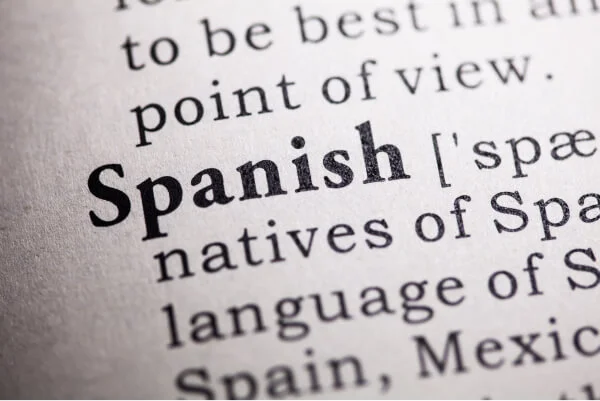
Neutral Spanish Translation
If you intend to target a broader audience of Spanish speakers, Trusted Translations can help you use a neutral Spanish that will be accepted and understood by the entire Spanish-speaking population.

Neutral Spanish Translation
If you intend to target a broader audience of Spanish speakers, Trusted Translations can help you use a neutral Spanish that will be accepted and understood by the entire Spanish-speaking population.
Spanish Characteristics Related Content
Home » Languages » Spanish » Spanish Characteristics » Neutral Spanish
Tailored vs. Neutral Spanish for Effective Communication
Spanish has evolved over thousands of years across several continents. As a result, many variations and “dialects” of the Spanish language have emerged and are in use across the globe, including in the 21 different countries where Spanish is an official or national language. This presents an interesting situation for anyone that seeks to target the Spanish-speaking market.
One the one hand, you have the opportunity to tailor (or localize) a particular translation to a very specific group, country, or region, making your communication more effective. On the other hand, if your intention is to target a broader audience of Spanish speakers, you may find it best to use a neutral Spanish that will be accepted and understood by the entire Spanish-speaking population.
What Is Neutral Spanish?
Commonly referred to as standard Spanish, global Spanish, or universal Spanish, “neutral Spanish” is a type of Spanish with as many culturally specific terms removed as possible. With a minimum of idiomatic phrases, regional variations, or neologisms (newly coined words), neutral Spanish allows the greatest number of Spanish speakers to understand your message across borders.
Neutral Spanish isn’t exactly a language on its own; rather, it is produced by the diligent attempts of professional translators to select terms that the majority of Spanish speakers in a broad market will comprehend. Therefore, it’s important to work with highly skilled translators that can be sensitive to each word’s suitability for a wide audience.
When to Use Neutral Spanish
A universal form of Spanish works well for content that must reach a global audience, such as journalism, television broadcasts, and other forms of mass media. In an increasingly digitized world, more and more organizations assume that their most critical content will be traveling further than ever before.
Neutral Spanish is also especially ideal for high-volume, technical or scientific content like manuals or software documentation. Written in plain, straightforward language without many cultural quirks, this type of material does not contain a high number of colloquialisms or slang in the first place. Indeed, major technological companies like Microsoft have long invested in guidelines and glossaries for neutral Spanish, recognizing this style as a solid compromise between widespread clarity and complete localization.
Finally, from a business perspective, neutral Spanish can be a boon for organizations or individuals that are just starting out. Producing and testing one translation in neutral Spanish might be more cost-effective for your company than the expense of localizing the text to fit multiple target countries. It’s also a great first step if you intend to localize your content later on.
Is Neutral Spanish the Right Fit?
There’s no perfect form of Spanish that will be suitable to all endeavors, and neutral Spanish is no different.
Because most of its regionalisms and idioms are removed, some have described neutral Spanish as toned-down, dry, or flat in tone. Advertisements and other types of marketing content, as well as creative works like films or television shows, rely on eliciting specific emotions from the audience; neutral Spanish is likely not the best fit for these projects. Instead, content localized for a hyper-specific audience may feel more personal and significant.
If you aren’t sure whether neutral Spanish translation is right for you, Trusted Translations can provide you with answers. We sometimes provide companies with a neutral Spanish translation first; then, depending on client needs, we can also help you localize your content to specific markets.
Get in touch with us to learn more about our comprehensive, cost-effective Spanish translation services.









